BLOG: HIKING CHINA'S WILD WALL
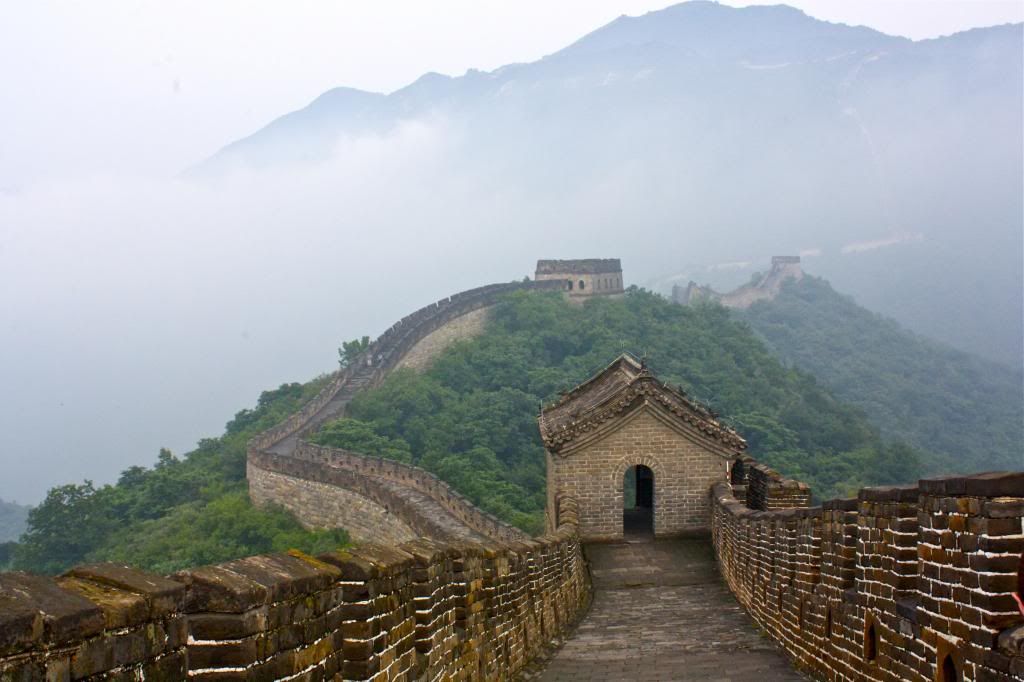 By Logan MaSenior EditorFew places are as representative of the Middle Kingdom as the Great Wall. Since its construction by the first emperor more than 2,000 years ago, it has captured the imagination of locals and foreigners alike while shielding the country from northern invaders. But like so many of the China’s cultural sites, parts of the Great Wall have fallen victim to overdevelopment. A case in point is the famous section at Badaling. Millions of tourists swarm its steps each year while dozens of hotels and restaurants dot the surrounding landscape. Having grown weary of the shops and crowds, I resolved this past summer to explore what my fellow Great Wall enthusiasts call the “wild wall,” the vast stretches of the Great Wall that are relatively untouched by tourism. The following is a brief account of the trip. Feel free to click on the images for a larger picture.Here are some words of advice for my fellow thrill-seekers. First, never travel alone on the wild wall. I've already done that, and I'm not planning to do it again. The unrestored sections of the wall pass through very remote areas. If something happens, you will find it extremely difficult to get help. Based on experience, cell phone reception is terrible up there. Second, be aware of the surrounding area. The Great Wall Forum is a good place to acquire maps and have questions answered by experienced hikers. Trust me, as silly as it sounds, people do lose themselves on the Great Wall. Third, never travel on rainy days. Not only do you run the risk of slipping, but you may also find yourself in a thunderstorm. The last place you want to be with lighting striking around you is an old watchtower. Believe me, people have been killed by lighting on the wall. And last, respect the wall. It's a national treasure as well as a UNESCO World Heritage Site. Clean up after yourself and refrain from removing pieces of the wall please.My journey to the wild wall began at the Mutianyu, pictured above. The Mutianyu wall is an hour and a half northeast of Beijing in Huairou County. Construction of the wall began in the mid-sixth century during the Northern Qi Dynasty, but much of its present incarnation was the result of a massive rebuilding project launched by the emperors of the Ming Dynasty in the 14th century. Like the tourist-infested Badaling, Mutianyu is largely restored. However, unlike Badaling, Mutianyu is walking distance to portions of the wild wall.
By Logan MaSenior EditorFew places are as representative of the Middle Kingdom as the Great Wall. Since its construction by the first emperor more than 2,000 years ago, it has captured the imagination of locals and foreigners alike while shielding the country from northern invaders. But like so many of the China’s cultural sites, parts of the Great Wall have fallen victim to overdevelopment. A case in point is the famous section at Badaling. Millions of tourists swarm its steps each year while dozens of hotels and restaurants dot the surrounding landscape. Having grown weary of the shops and crowds, I resolved this past summer to explore what my fellow Great Wall enthusiasts call the “wild wall,” the vast stretches of the Great Wall that are relatively untouched by tourism. The following is a brief account of the trip. Feel free to click on the images for a larger picture.Here are some words of advice for my fellow thrill-seekers. First, never travel alone on the wild wall. I've already done that, and I'm not planning to do it again. The unrestored sections of the wall pass through very remote areas. If something happens, you will find it extremely difficult to get help. Based on experience, cell phone reception is terrible up there. Second, be aware of the surrounding area. The Great Wall Forum is a good place to acquire maps and have questions answered by experienced hikers. Trust me, as silly as it sounds, people do lose themselves on the Great Wall. Third, never travel on rainy days. Not only do you run the risk of slipping, but you may also find yourself in a thunderstorm. The last place you want to be with lighting striking around you is an old watchtower. Believe me, people have been killed by lighting on the wall. And last, respect the wall. It's a national treasure as well as a UNESCO World Heritage Site. Clean up after yourself and refrain from removing pieces of the wall please.My journey to the wild wall began at the Mutianyu, pictured above. The Mutianyu wall is an hour and a half northeast of Beijing in Huairou County. Construction of the wall began in the mid-sixth century during the Northern Qi Dynasty, but much of its present incarnation was the result of a massive rebuilding project launched by the emperors of the Ming Dynasty in the 14th century. Like the tourist-infested Badaling, Mutianyu is largely restored. However, unlike Badaling, Mutianyu is walking distance to portions of the wild wall. Near the western end of Mutianyu, the wall ascends in a steep incline, extending for hundreds of feet into the clouds. Most tourists choose to turn back at this point, but as an ex-varsity cross country runner, I attacked the 452 steps (yes I counted) with as much tenacity as my out-of-shape body would allow me. Huffing and puffing, I made it to the top, at times crawling on all fours.
Near the western end of Mutianyu, the wall ascends in a steep incline, extending for hundreds of feet into the clouds. Most tourists choose to turn back at this point, but as an ex-varsity cross country runner, I attacked the 452 steps (yes I counted) with as much tenacity as my out-of-shape body would allow me. Huffing and puffing, I made it to the top, at times crawling on all fours.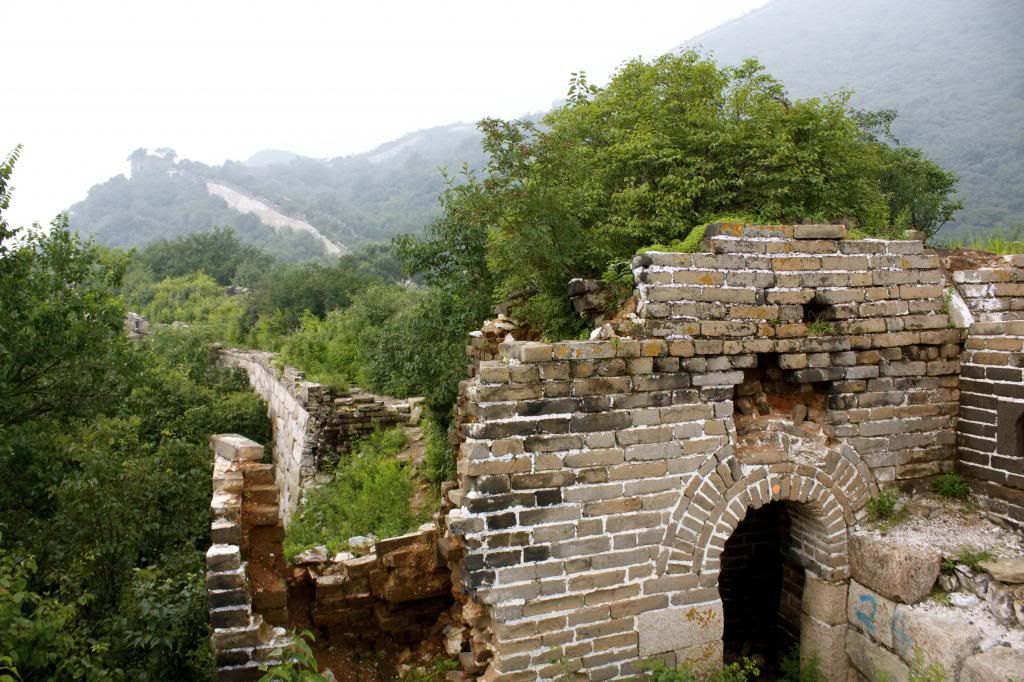 For safety reasons, local authorities ban hiking on unrestored parts of the wall. However, the ban is rarely enforced. Only a few warning signs impeded my progress and after a hour of climbing, the wall began to take on a dilapidated form. Crumbled watchtowers and collapsed battlements punctuated the landscape, a stark contrast to the restored section that I had just come from.
For safety reasons, local authorities ban hiking on unrestored parts of the wall. However, the ban is rarely enforced. Only a few warning signs impeded my progress and after a hour of climbing, the wall began to take on a dilapidated form. Crumbled watchtowers and collapsed battlements punctuated the landscape, a stark contrast to the restored section that I had just come from.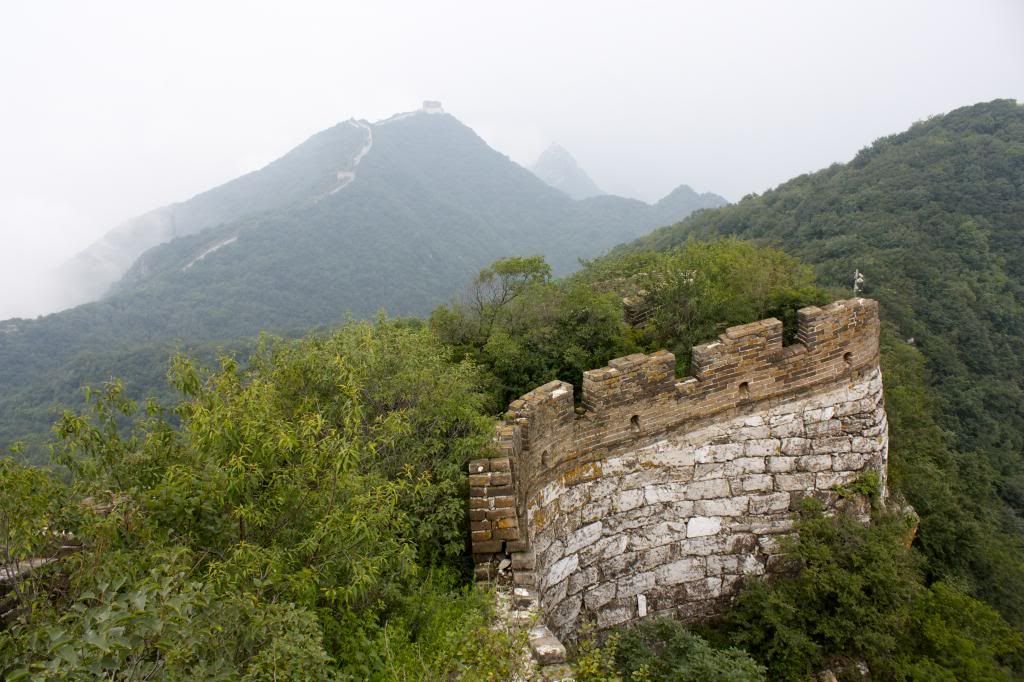 Further west of Mutianyu, the wall forms a massive curve known as the Ox-Horn. During the summer, the vegetation here is so thick that hikers are forced to tread along the wall’s edge. One misstep could lead to a 10-meter fall and crippling injury. Loose stones and steep inclines make the climb even more difficult. The descent from the highest point of the Ox-Horn was so slippery that I was forced to slide down on my bottom, ruining a good pair of shorts in the process. Only on the way was I made aware of a route that bypassed the most dangerous sections of the Ox-Horn. A failure on my part to follow the second piece of advice doled out earlier.
Further west of Mutianyu, the wall forms a massive curve known as the Ox-Horn. During the summer, the vegetation here is so thick that hikers are forced to tread along the wall’s edge. One misstep could lead to a 10-meter fall and crippling injury. Loose stones and steep inclines make the climb even more difficult. The descent from the highest point of the Ox-Horn was so slippery that I was forced to slide down on my bottom, ruining a good pair of shorts in the process. Only on the way was I made aware of a route that bypassed the most dangerous sections of the Ox-Horn. A failure on my part to follow the second piece of advice doled out earlier.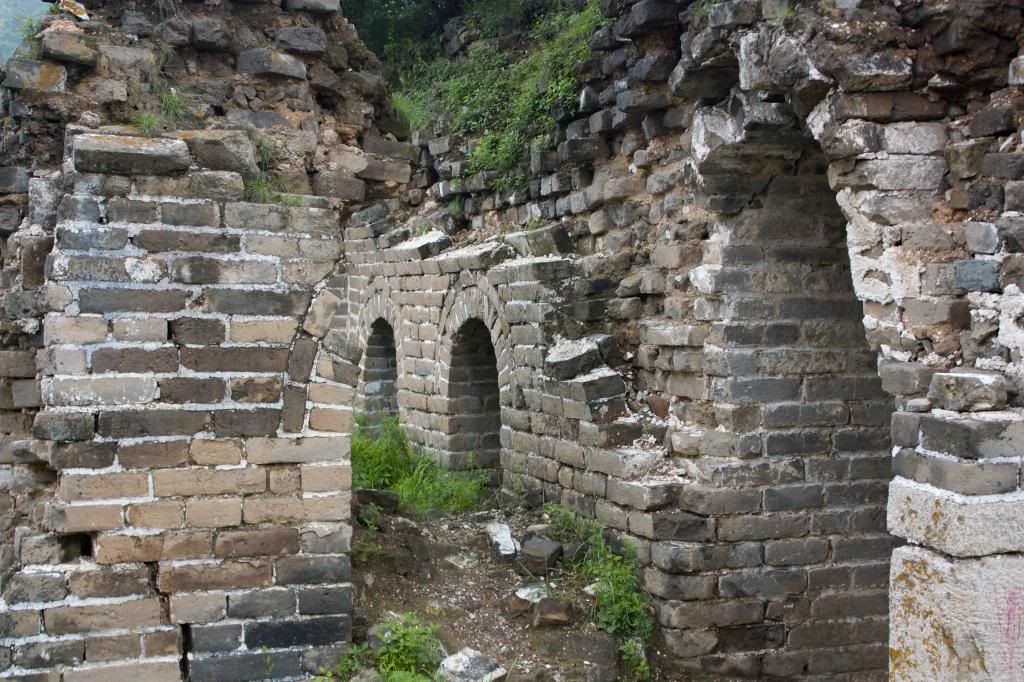 Fallen into disrepair after hundreds of years of disuse, this ruin is almost unrecognizable as one of the Great Wall's iconic watchtowers.
Fallen into disrepair after hundreds of years of disuse, this ruin is almost unrecognizable as one of the Great Wall's iconic watchtowers.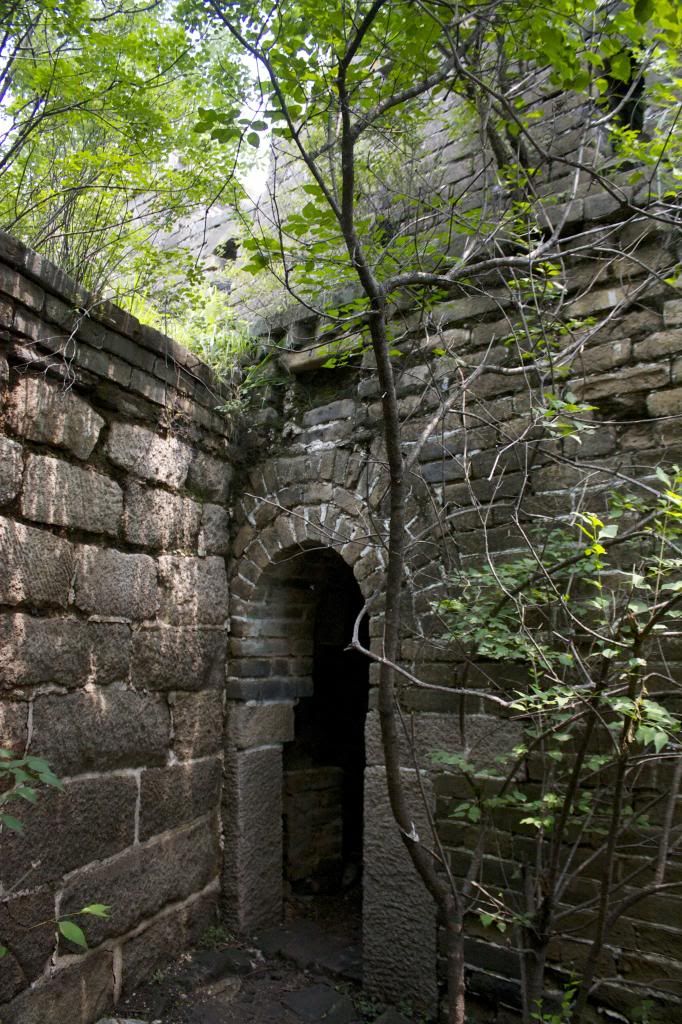 Nature advances to reclaim what was once hers. Long-abandoned by its occupants, this watchtower now plays host to plants and animals.
Nature advances to reclaim what was once hers. Long-abandoned by its occupants, this watchtower now plays host to plants and animals.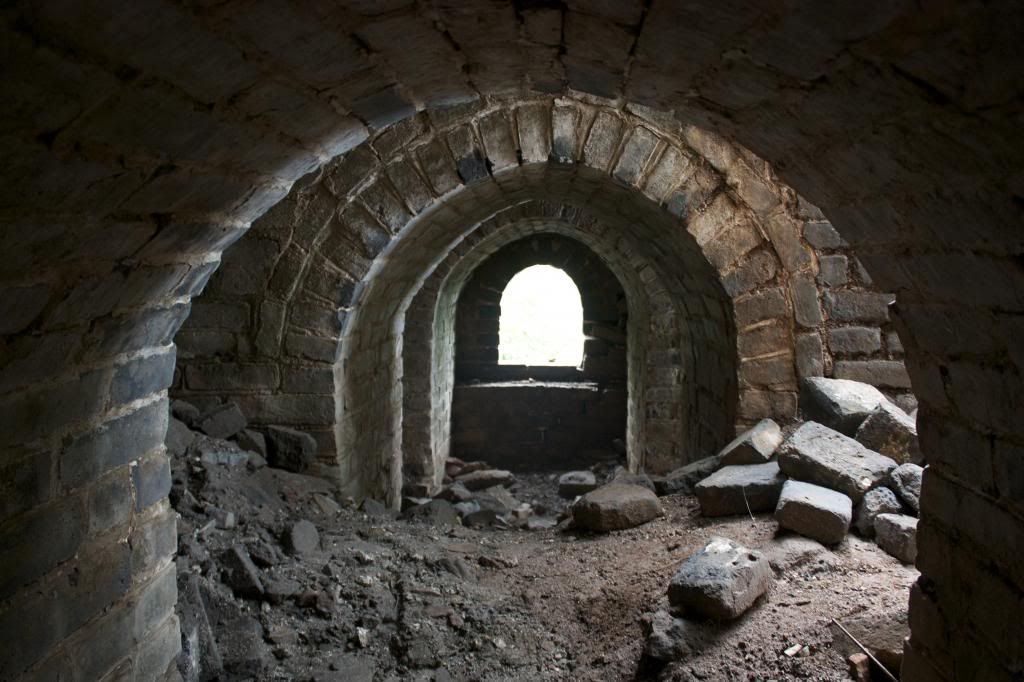 Years of sedimentary build-up have made it impossible to pass through this watchtower without stooping.
Years of sedimentary build-up have made it impossible to pass through this watchtower without stooping.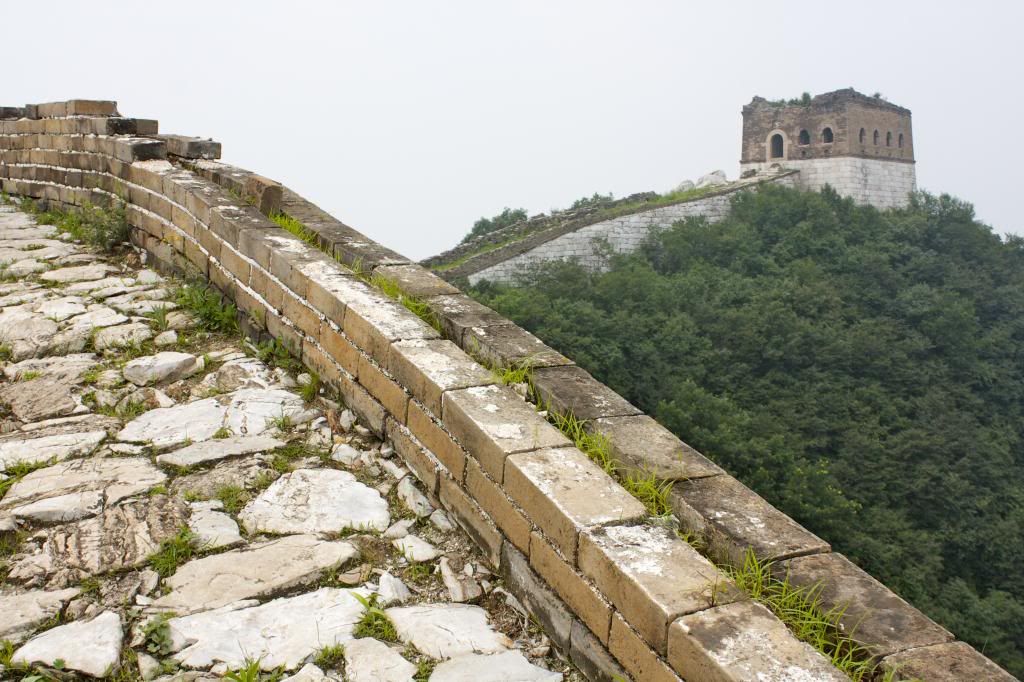 After hours of sliding down loose pavements and weaving through abandoned watchtowers, I reached the easternmost watchtower on the Jiankou wall, the Facing North Tower. From Mutianyu, the distance to Jiankou is approximately six miles. Here, I met an Australian couple and their local guide, the only people that I would run into on the wild wall that day.
After hours of sliding down loose pavements and weaving through abandoned watchtowers, I reached the easternmost watchtower on the Jiankou wall, the Facing North Tower. From Mutianyu, the distance to Jiankou is approximately six miles. Here, I met an Australian couple and their local guide, the only people that I would run into on the wild wall that day.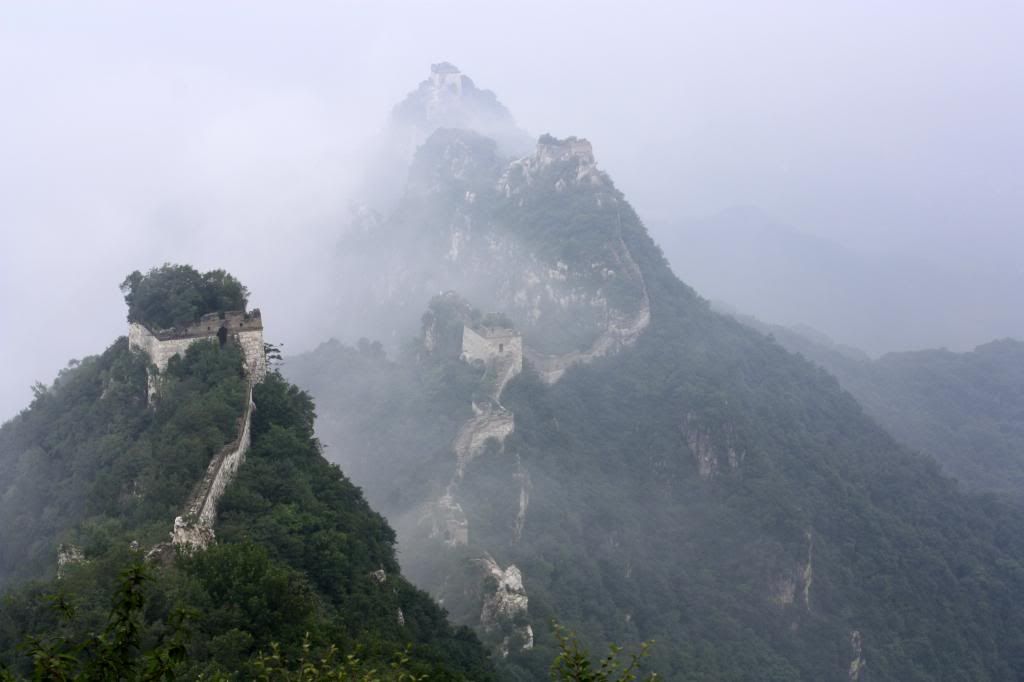 I was greeted by a spectacular view of the Jiankou Pass from the western doorway of the Facing North Tower. Of all the sections of the Great Wall, Jiankou is considered the most dangerous. Every few years, someone falls to his/her death while attempting to navigate its jagged cliffs and steep drop-offs. But despite the inherent danger it poses, the scenic location still draws a small number of adventurous hikers and photographers. Among the highlights of the Jiankou Wall is the Eagle Flies Facing Upward Tower, visible in the distance, an imposing structure situated so high up that eagles are supposedly forced to fly face-up in order to clear the top. As I took in the view from my perch high above the pass, I could not help but think of the old words said to soldiers setting off to man the wall: 不到长城非好汉--"One who fails to reach the Great Wall cannot be called a man."Although I wanted to explore the rest of the Jiankou wall, fear of risking a nighttime hike convinced me to turn back. After catching my breath, I returned to civilization. A few weeks later, I grew weary of city life in Beijing and decided to hike another portion of the wild wall. While the trail between Mutianyu and Jiankou did grant a unique wild wall experience, the dense foliage and the thick fog that day prevented me from taking in the wall at its best. After doing some research, I set off for the Jinshanling section of the Great Wall.
I was greeted by a spectacular view of the Jiankou Pass from the western doorway of the Facing North Tower. Of all the sections of the Great Wall, Jiankou is considered the most dangerous. Every few years, someone falls to his/her death while attempting to navigate its jagged cliffs and steep drop-offs. But despite the inherent danger it poses, the scenic location still draws a small number of adventurous hikers and photographers. Among the highlights of the Jiankou Wall is the Eagle Flies Facing Upward Tower, visible in the distance, an imposing structure situated so high up that eagles are supposedly forced to fly face-up in order to clear the top. As I took in the view from my perch high above the pass, I could not help but think of the old words said to soldiers setting off to man the wall: 不到长城非好汉--"One who fails to reach the Great Wall cannot be called a man."Although I wanted to explore the rest of the Jiankou wall, fear of risking a nighttime hike convinced me to turn back. After catching my breath, I returned to civilization. A few weeks later, I grew weary of city life in Beijing and decided to hike another portion of the wild wall. While the trail between Mutianyu and Jiankou did grant a unique wild wall experience, the dense foliage and the thick fog that day prevented me from taking in the wall at its best. After doing some research, I set off for the Jinshanling section of the Great Wall.  Jinshanling is much further from Beijing than Badaling or Mutianyu. In fact, it’s not even within the boundaries of the expansive Beijing municipal area. To reach the Great Wall there, one must drive 80 miles northeast of Beijing to Luanping County in Hebei Province. Despite the long commute, it still attracts a loyal following because of its unparalleled beauty. Most visitors go to Jinshanling for its sunrise and sunset. To accommodate them, local farmers have transformed their traditional Chinese siheyuan homes into inns. Originally, I planned to stay at Old Zhou’s, but because he had no room, I was directed to his brother’s place instead. For 100 RMB, or around $16, Old Zhou’s brother provided me with a delicious meal, a clean room and a private shower.
Jinshanling is much further from Beijing than Badaling or Mutianyu. In fact, it’s not even within the boundaries of the expansive Beijing municipal area. To reach the Great Wall there, one must drive 80 miles northeast of Beijing to Luanping County in Hebei Province. Despite the long commute, it still attracts a loyal following because of its unparalleled beauty. Most visitors go to Jinshanling for its sunrise and sunset. To accommodate them, local farmers have transformed their traditional Chinese siheyuan homes into inns. Originally, I planned to stay at Old Zhou’s, but because he had no room, I was directed to his brother’s place instead. For 100 RMB, or around $16, Old Zhou’s brother provided me with a delicious meal, a clean room and a private shower. The Jinshanling wall sits on 6.5-mile stretch bordered by the Simatai wall to the east and the Gubeikou wall to the west. Qi Jiguang, a Ming general famous for fending off the Wokou pirate fleets, oversaw the construction of this section in 1570. Sixty-seven watchtowers straddle the ridge. The Lesser Jinshan Tower is in the foreground. Ming soldiers from the southern provinces of Jiangsu and Zhejiang gave it its name to remind them of their hometown.
The Jinshanling wall sits on 6.5-mile stretch bordered by the Simatai wall to the east and the Gubeikou wall to the west. Qi Jiguang, a Ming general famous for fending off the Wokou pirate fleets, oversaw the construction of this section in 1570. Sixty-seven watchtowers straddle the ridge. The Lesser Jinshan Tower is in the foreground. Ming soldiers from the southern provinces of Jiangsu and Zhejiang gave it its name to remind them of their hometown. Heading west towards Gubeikou, the wall gradually deteriorates. While most watchtowers on the Great Wall have four or less windows, the Five-Eyed Tower is unique in that it has five. The tower also features barrier walls that cross half the width of the path along the top of the wall, a feature almost unique to Jinshanling. These walls provided an extra layer of defense in case enemies climbed onto the wall.
Heading west towards Gubeikou, the wall gradually deteriorates. While most watchtowers on the Great Wall have four or less windows, the Five-Eyed Tower is unique in that it has five. The tower also features barrier walls that cross half the width of the path along the top of the wall, a feature almost unique to Jinshanling. These walls provided an extra layer of defense in case enemies climbed onto the wall.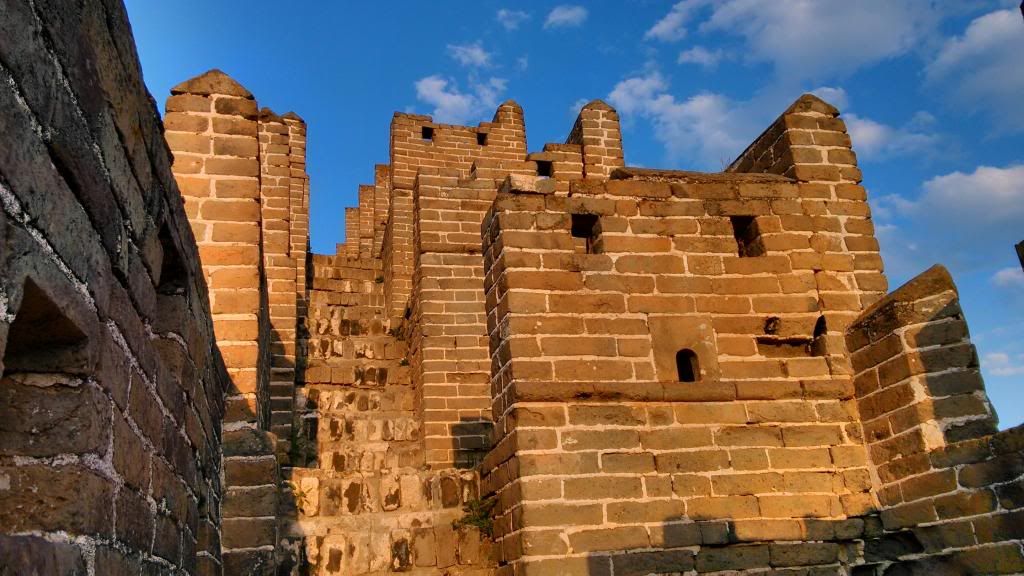 Here’s a closer look at the aforementioned barrier walls.
Here’s a closer look at the aforementioned barrier walls. Upon reaching the western end of the Jinshanling wall, I ran into a group of photographers. One man, a banker by profession, had climbed the wall 50 times this year. Another, a farmer, more than 70. Although we hailed from different backgrounds, we were united by a common fascination with the Great Wall. I stayed with my newfound companions to watch the sunset. From our position, the Gubeikou section of the Great Wall could be seen winding into the distance. Eventually, it links with the wall at Mutianyu. Interestingly, it was at Gubeikou in 1933 during the Japanese invasion that the Great Wall was last used to defend China.
Upon reaching the western end of the Jinshanling wall, I ran into a group of photographers. One man, a banker by profession, had climbed the wall 50 times this year. Another, a farmer, more than 70. Although we hailed from different backgrounds, we were united by a common fascination with the Great Wall. I stayed with my newfound companions to watch the sunset. From our position, the Gubeikou section of the Great Wall could be seen winding into the distance. Eventually, it links with the wall at Mutianyu. Interestingly, it was at Gubeikou in 1933 during the Japanese invasion that the Great Wall was last used to defend China. I woke up at 4 a.m. the next morning to catch the sunrise from the Lesser Jinshan Tower. I was not alone. Although the ascent was pitch black, some of the photographers that I met the day before were already on the wall with their tripods in place. A few had hopped over the side and were congregating on a precarious ledge to secure a good shot. For a while, we stood on the wall, waiting for the first glimmer of light. Slowly but surely, the black sky turned blue, then pink. Finally, the sun rose over the mountains in the east, eliciting loud cheers from our tireless band. When the dawn touched the wall, it basked it in a warm, golden hue. As the wall stretched into the distance, it resembled a golden stream. Looking back, it was truly a once in a lifetime experience.
I woke up at 4 a.m. the next morning to catch the sunrise from the Lesser Jinshan Tower. I was not alone. Although the ascent was pitch black, some of the photographers that I met the day before were already on the wall with their tripods in place. A few had hopped over the side and were congregating on a precarious ledge to secure a good shot. For a while, we stood on the wall, waiting for the first glimmer of light. Slowly but surely, the black sky turned blue, then pink. Finally, the sun rose over the mountains in the east, eliciting loud cheers from our tireless band. When the dawn touched the wall, it basked it in a warm, golden hue. As the wall stretched into the distance, it resembled a golden stream. Looking back, it was truly a once in a lifetime experience.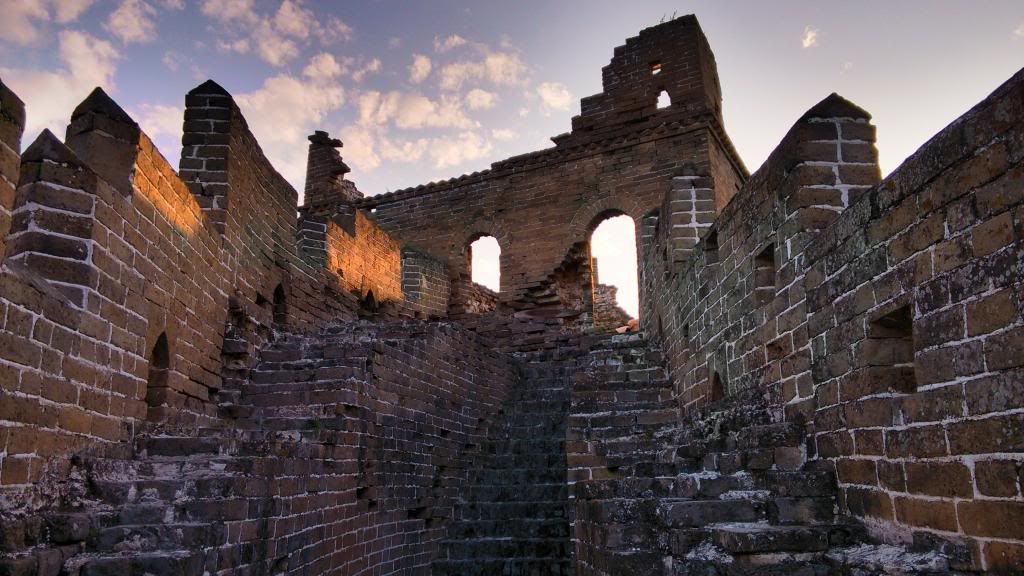 With the sun rising, I headed east. Shortly after passing the Greater Jinshan Tower, the restored section ends. For safety reasons, most people turn back here. Like my last hike, I saw no one once I entered the wild wall.
With the sun rising, I headed east. Shortly after passing the Greater Jinshan Tower, the restored section ends. For safety reasons, most people turn back here. Like my last hike, I saw no one once I entered the wild wall. This is the interior of a watchtower on the eastern route towards Simatai. In the past, wooden pillars acted as a support for the second floor. After the tower was abandoned, locals salvaged the wood for building purposes, causing it to collapse. Though it was in ruins, the watchtower gave off a venerable air.
This is the interior of a watchtower on the eastern route towards Simatai. In the past, wooden pillars acted as a support for the second floor. After the tower was abandoned, locals salvaged the wood for building purposes, causing it to collapse. Though it was in ruins, the watchtower gave off a venerable air.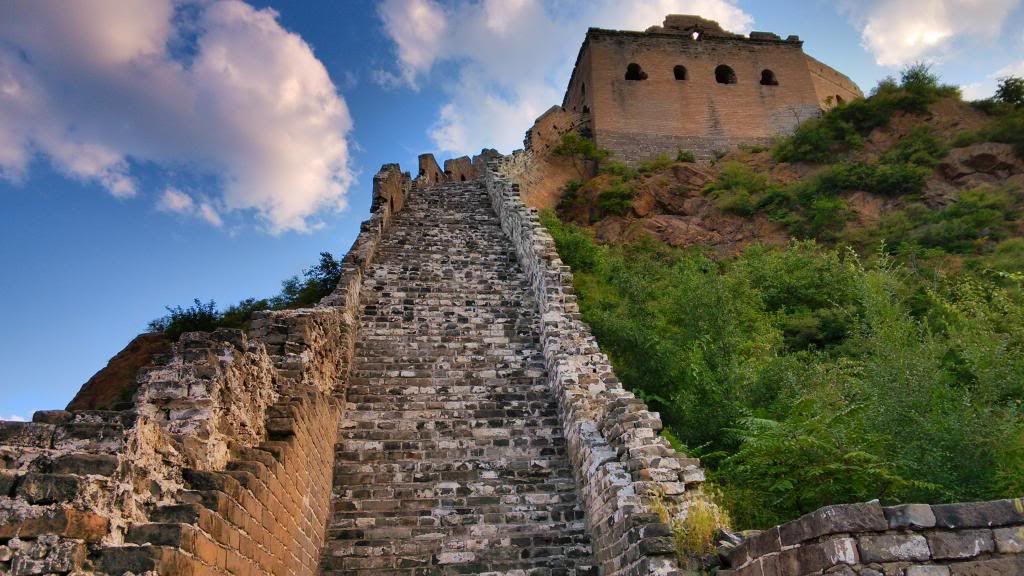 Exactly 100 steep steps lead to the top of what is known as the General’s Tower. Situated near the highest point in Jinshanling, the General’s Tower served as a command center and occupied a position of great strategic importance.
Exactly 100 steep steps lead to the top of what is known as the General’s Tower. Situated near the highest point in Jinshanling, the General’s Tower served as a command center and occupied a position of great strategic importance.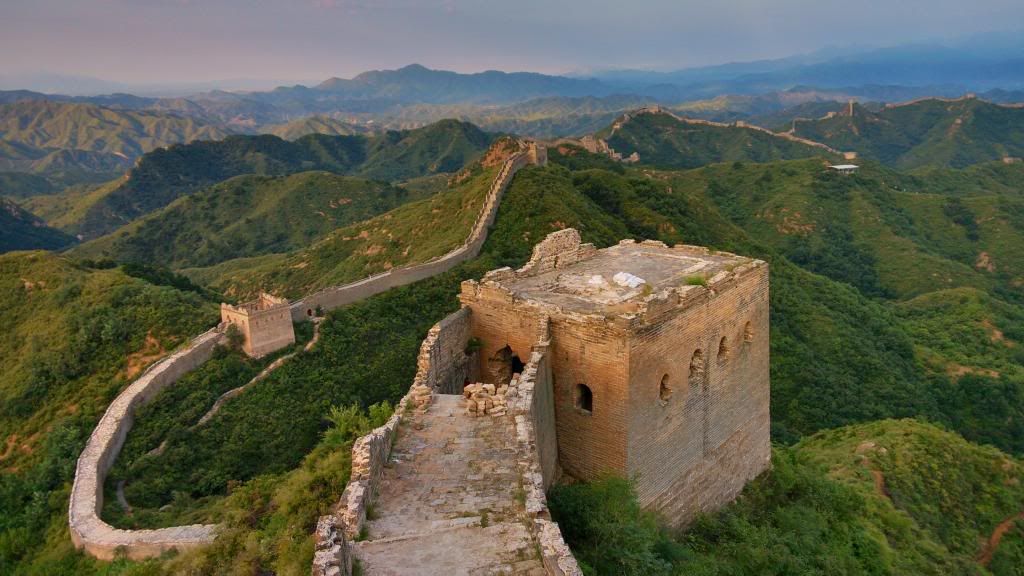 The General's Tower sits in the foreground of this westerly view of the Jinshanling wall. From here, the wall runs into the mountains near Mutianyu, extending as far as the eye can see. Any invaders would be hard-pressed to avoid detection from this vantage point.
The General's Tower sits in the foreground of this westerly view of the Jinshanling wall. From here, the wall runs into the mountains near Mutianyu, extending as far as the eye can see. Any invaders would be hard-pressed to avoid detection from this vantage point.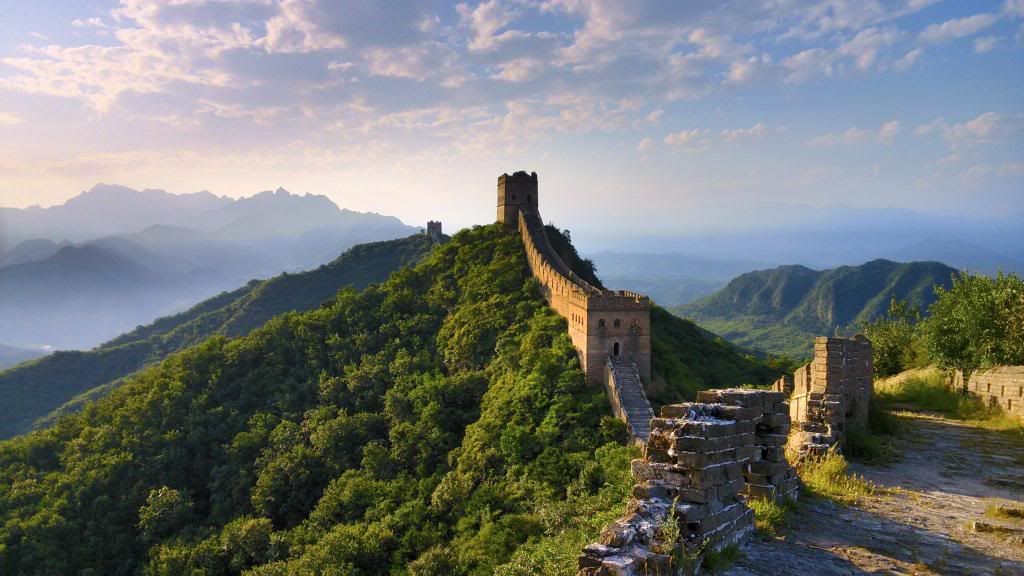 These are the last towers on the eastern end of Jinshanling Great Wall. Further down, the wall dips into a reservoir before ascending the Simatai ridge, which is visible in the background. Some say that the lights of Beijing can be seen from the highest watchtower at Simatai, but sadly, that was a journey for another time. A guard stopped me from entering once I reached the bridge that spanned the reservoir. Apparently, Simatai had been closed since 2010 for restoration purposes by the local goverment. Although I was disappointed that I could not press on with my hike, my experiences on the wild wall were more than fulfilling. All images by Logan Ma, Prospect Senior Editor
These are the last towers on the eastern end of Jinshanling Great Wall. Further down, the wall dips into a reservoir before ascending the Simatai ridge, which is visible in the background. Some say that the lights of Beijing can be seen from the highest watchtower at Simatai, but sadly, that was a journey for another time. A guard stopped me from entering once I reached the bridge that spanned the reservoir. Apparently, Simatai had been closed since 2010 for restoration purposes by the local goverment. Although I was disappointed that I could not press on with my hike, my experiences on the wild wall were more than fulfilling. All images by Logan Ma, Prospect Senior Editor
